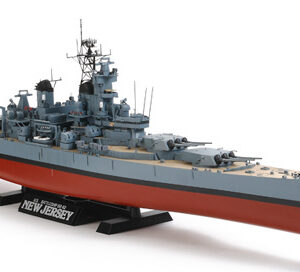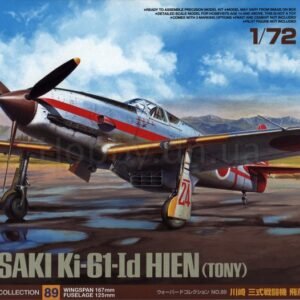Description
The story of the P-47 began in the summer of 1940. At that time Republic had plans to produce a nimble, lightweight fighter- called the P-44 Rocket. The war in Europe was raging, and with a view to the United States possibly becoming involved, The Air Corps decided that something larger than the P-44 would be needed. Alexander Kartveli was Republic’s chief engineer at the time, and is the one who can be credited with the first rough drafts of the new plane. It was a very radical concept that planned to use the new Pratt and Whitney Double Wasp XR-2800-21 eighteen cylinder, two-row radial engine (whew). It was the largest and most powerful aircraft engine, capable of 2000 horsepower (over time the engine was fitted with a water-methanol injection system increasing power to 2300 hp). Added to horsepower was firepower. His design envisioned no less than eight .50 caliber guns and enough armor plating to protect the pilot from virtually every angle of attack. All of these features came at a cost; the plane would weigh about 4000 pounds, twice that of any existing single seat fighter. The prototype Thunderbolt first took to the air in May 1941, and after exhaustive testing production began with the P-47B. At about the same time the Air Corps became the Air Force. The US had mixed feelings about their new fighter. The aircraft’s performance and weapons appeared to be everything that they needed, however its sheer size and power made it a handful. The P-47B was also an earth lover, demanding a lot of runway to become airborne. This would not only be true for every other P-47 built, but also for the later jet designs. The ducts that were passing on the sides and below the cockpit to connect the supercharger placed behind the pilot’s seat gave to this plane its massive aspect. Many sub-types of the P-47D, designated D-1 to D-40, were produced but the first versions were called Razorback because of their sharp edge dorsal fin. The D-25 sub-type, which was introduced around June 1944, was fitted with an electrically actuated bubble canopy in order to improve pilot visibility and increased capacity fuel tanks. All subsequent sub-types were also fitted with the bubble canopy and became a characteristic feature of late production Thunderbolts. The P-47 Bubbletop proved to be an excellent, well-balanced fighter-bomber. Dive into your local hobbyist for Tamiya’s new 1/48 P-47D #61090 soon!





